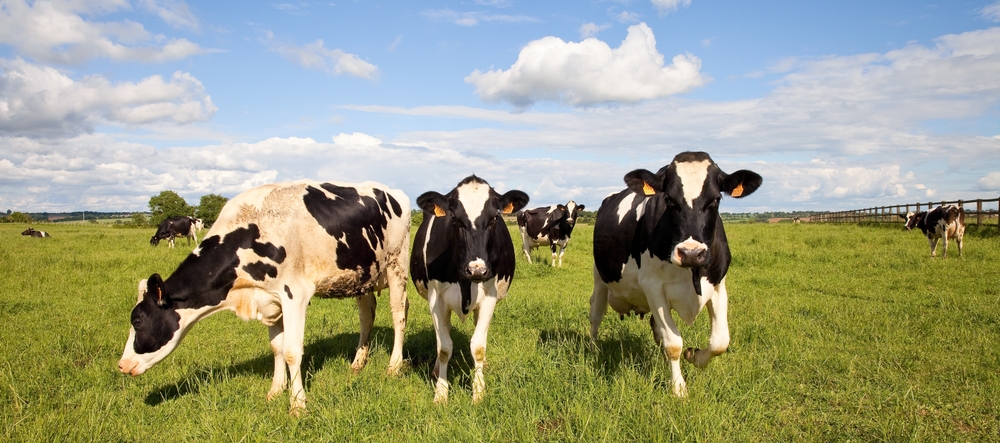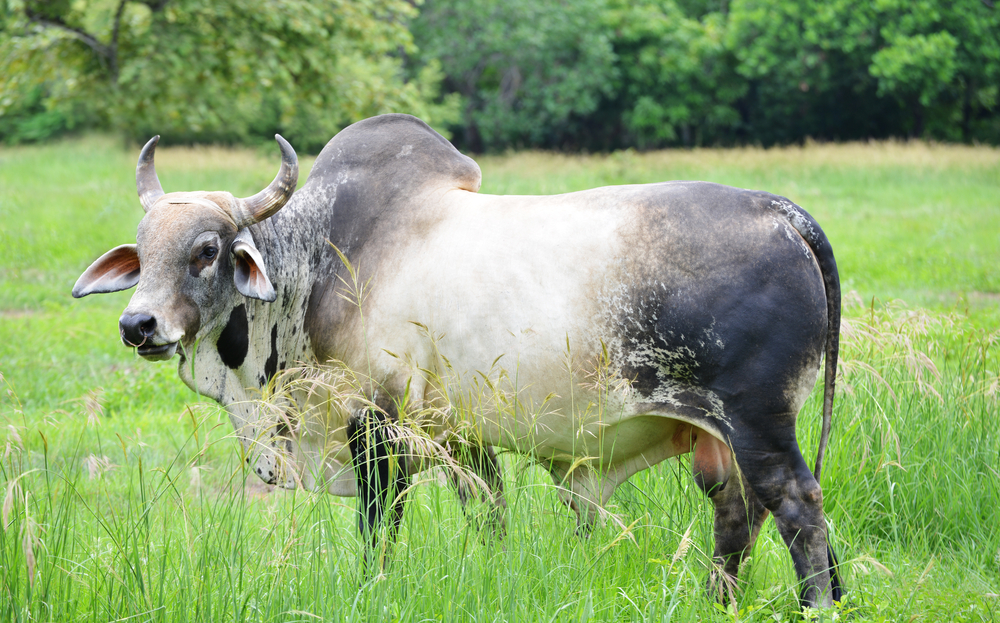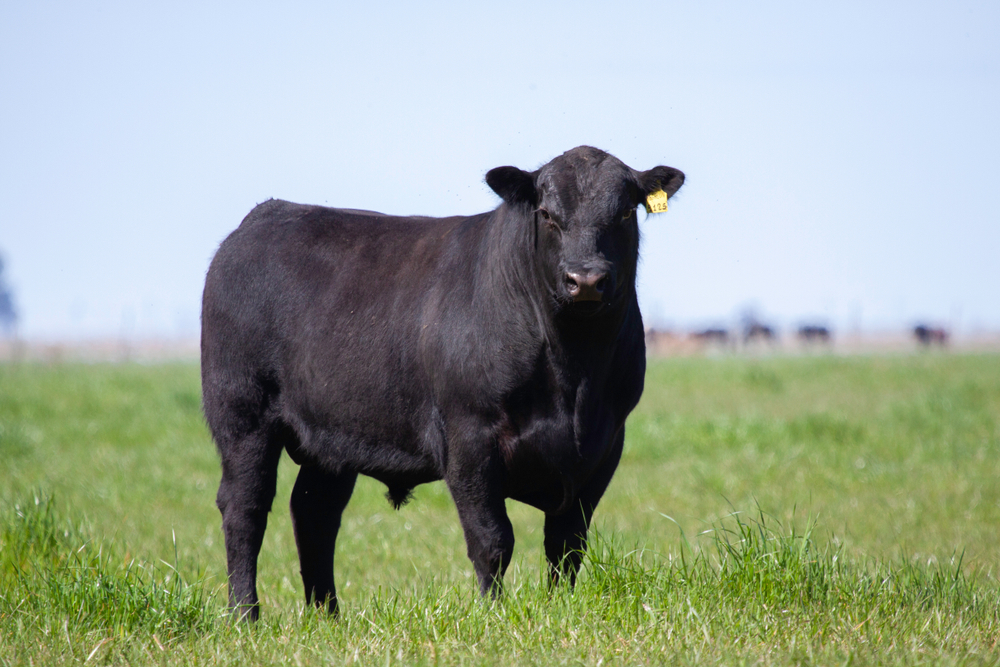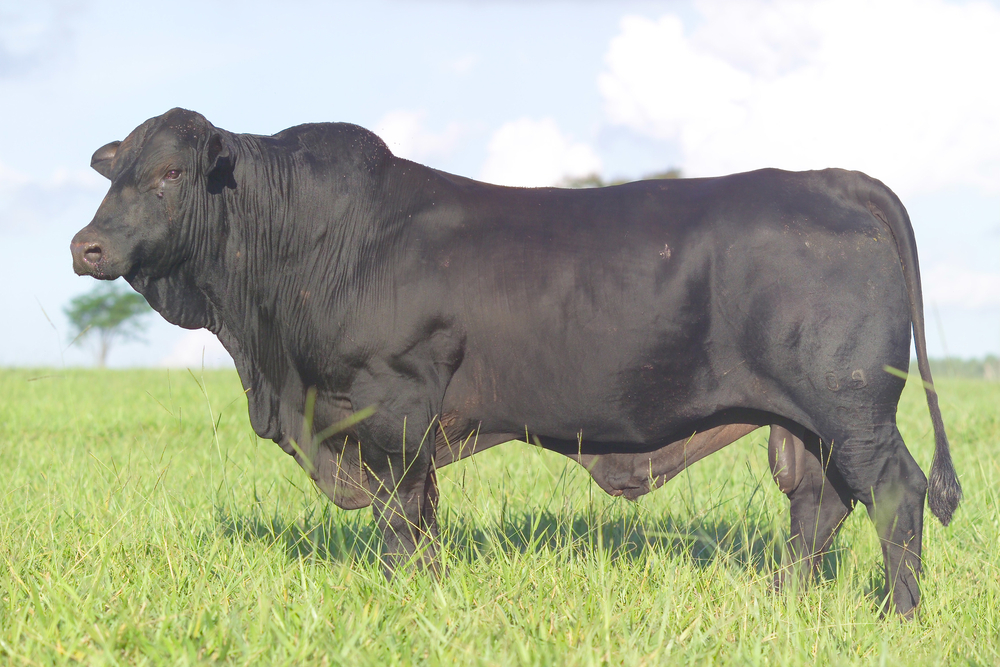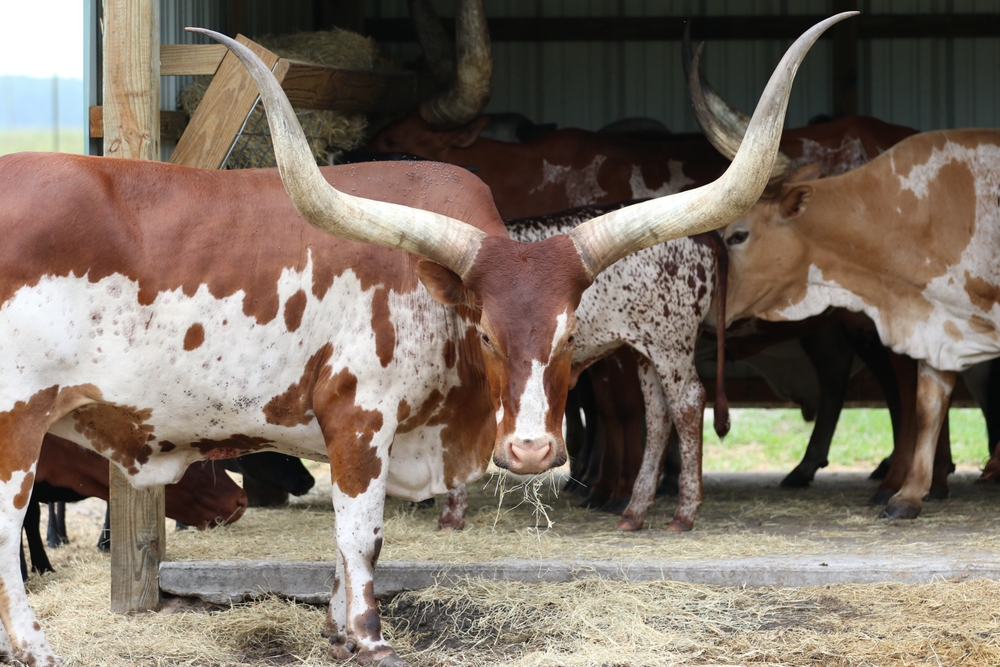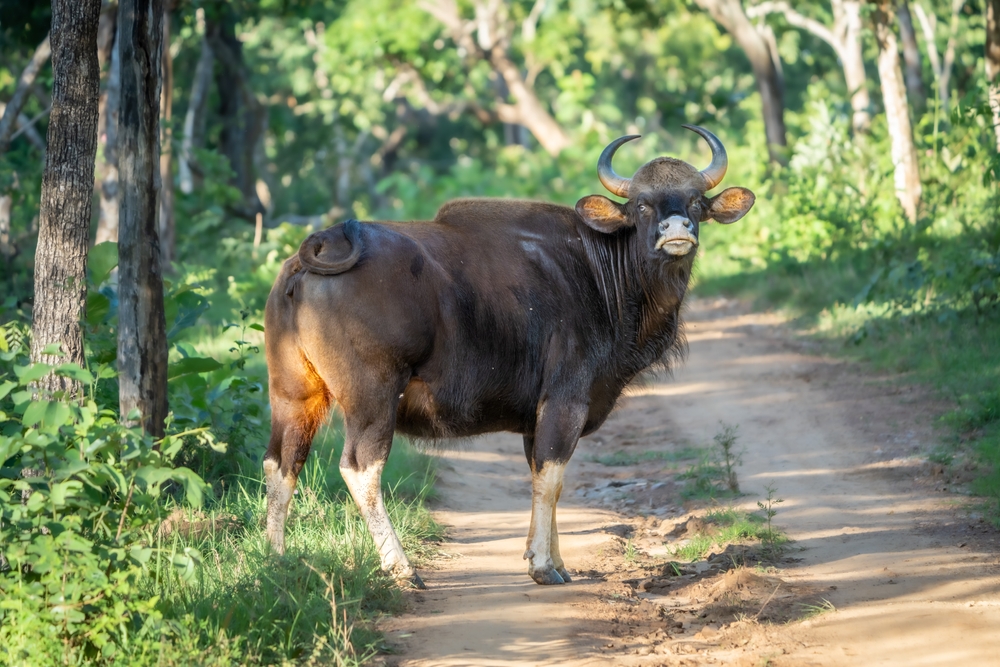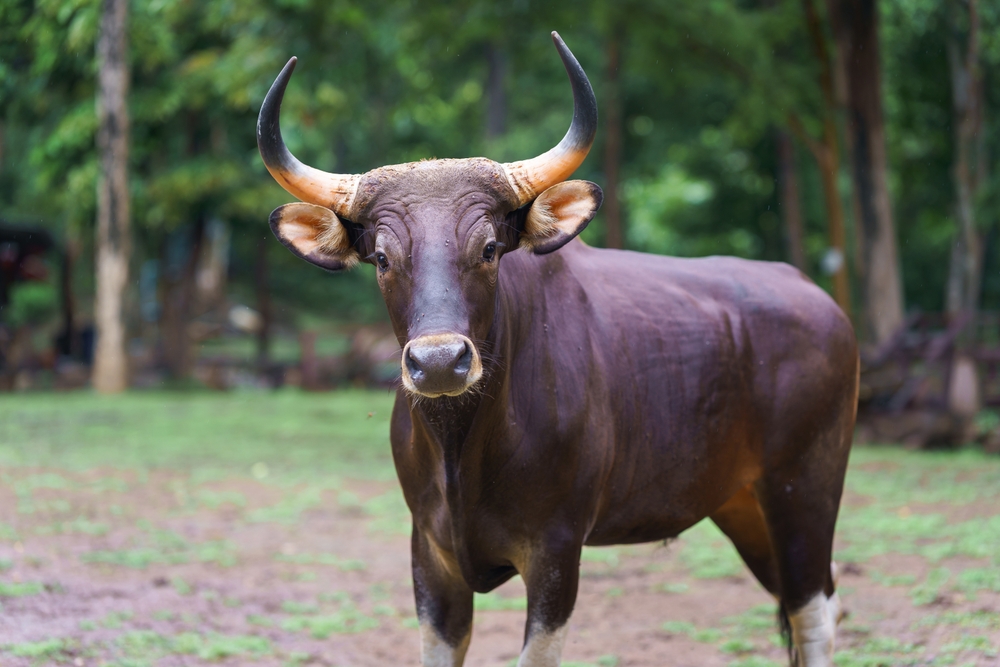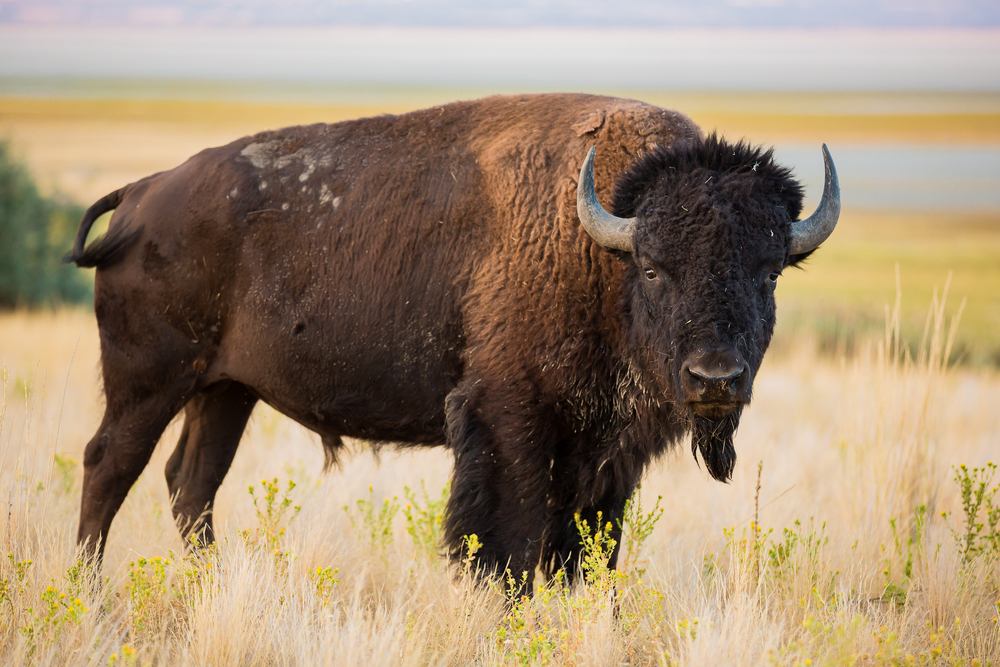The dairy cow is a domesticated breed of cattle (Bos taurus), closely related to other Bos taurus beef and dual-purpose breeds, such as Angus, Shorthorn, and Simmental. It is also related to Bos indicus (zebu) cattle, though less directly, with crossbreeding occurring in tropical dairy operations.
About
The dairy cow (Bos taurus) is a domesticated bovine bred specifically for high milk production and belongs to the family Bovidae, which includes buffalo, bison, antelope, and goats. While cattle have been milked for thousands of years, selective breeding in recent centuries has created specialized dairy breeds that produce far more milk than beef or dual-purpose cattle. Modern dairy farming relies on these breeds for milk, which is processed into butter, cheese, yogurt, and other dairy products consumed worldwide.
Dairy cows are typically medium to large in size, with weights ranging from 450–800 kg (1,000–1,800 lbs), depending on the breed. They are characterized by a leaner frame than beef cattle, with prominent udders adapted for sustained milk production. Coat color and pattern vary widely—Holsteins are known for their iconic black-and-white markings, Jerseys for their light brown coats, Guernseys for their reddish-brown and white patches, and Brown Swiss for their solid brown coloration.
The most common breeds in commercial dairy production include the Holstein (high milk yield), Jersey (rich, high-butterfat milk), Guernsey (golden-colored milk), Ayrshire, and Brown Swiss. A high-producing Holstein can yield over 9,000 liters (about 2,400 gallons) of milk per year under modern management practices.
Dairy cows thrive in well-managed environments where they receive balanced nutrition, access to clean water, and comfortable housing. They require consistent milking—usually twice or three times daily—to maintain production. Reproduction is managed through natural breeding or artificial insemination, with cows calving roughly once a year to sustain milk flow.
Dairy cows play a central role in global agriculture, providing a primary source of animal protein and essential nutrients for billions of people. Advances in genetics, nutrition, and animal welfare continue to enhance milk yield, cow health, and sustainability in dairy farming.
Physical Characteristics
Dairy cows are domesticated cattle selectively bred for high milk production, with several specialized physical traits that support lactation efficiency:
-
Coat: Short, smooth hair that varies by breed—common colors include black-and-white (Holstein), reddish-brown-and-white (Ayrshire), solid brown (Jersey, Brown Swiss), or solid red (Milking Shorthorn).
-
Head: Medium-sized head with a straight profile; some breeds have horns (often removed in commercial settings), while others are naturally polled.
-
Udder: Large, well-developed udder with four teats, supported by strong ligaments, allowing for high milk storage and easy milking access.
-
Body: Angular, lean frame with a deep barrel-shaped ribcage to accommodate large digestive organs; less muscle bulk than beef breeds, prioritizing milk over meat production.
-
Neck: Long and slender, often with loose skin, aiding in heat dissipation.
-
Tail: Long, ending in a tuft of hair for insect control.
Size:
-
Length (Body): Approximately 7.5 to 8.5 ft (2.3 to 2.6 m) from head to rump.
-
Shoulder Height: Around 4.5 to 5 ft (1.37 to 1.52 m).
Weight:
-
Adult Female (Cow): Typically 1,200 to 1,600 lbs (545 to 725 kg).
-
Adult Male (Bull): Can reach 1,800 to 2,500 lbs (820 to 1,135 kg), though bulls are not used for milking.
Dairy cows’ lean, angular build, large udders, and high metabolic efficiency are specialized adaptations for producing large volumes of milk, often exceeding several gallons per day in peak production.
Reproduction
Dairy cows have a reproductive cycle managed to maintain consistent milk production while ensuring herd replacement:
-
Mating and Breeding Season:
-
Dairy cows are non-seasonal breeders, able to reproduce year-round.
-
Breeding is typically controlled through artificial insemination (AI) to select for high milk yield, udder health, and disease resistance.
-
-
Gestation:
-
The gestation period lasts about 283 days (approximately 9 months).
-
-
Birth and Calving:
-
Usually give birth to a single calf; twins occur occasionally.
-
Calving is timed so cows can enter a lactation cycle shortly after birth.
-
-
Calf Characteristics at Birth:
-
Newborn calves typically weigh 60 to 100 lbs (27 to 45 kg) depending on breed.
-
Calves stand and nurse within a few hours of birth.
-
-
Maternal Care:
-
In commercial dairies, calves are often separated from the mother within 24 hours to allow milk collection for human use and to prevent disease transfer.
-
Calves are then bottle-fed or bucket-fed milk replacer or pasteurized whole milk.
-
-
Maturity and Breeding Readiness:
-
Heifers reach breeding age at 13 to 15 months, aiming for first calving at about 2 years of age.
-
Bulls can breed from around 15 months, though most dairy herds rely on AI rather than natural service.
-
Dairy reproduction is closely managed to maintain a 12- to 14-month calving interval, ensuring steady milk output while preserving the cow’s health and productivity.
Lifespan
Lifespan
-
In Commercial Dairy Operations:
Dairy cows typically live 5 to 7 years, with many culled earlier due to declining milk yield, reproductive issues, or udder health problems. Average productive life is about 3 to 4 lactations. -
In Small-Scale or Pastoral Systems:
With less intensive production demands, dairy cows may live 10 to 12 years, remaining productive for more lactations. -
In Sanctuary or Ideal Conditions:
Without the stresses of high-volume milk production, dairy cows can live 15 to 20 years, though such longevity is rare in commercial settings.
Threats to Longevity:
-
Metabolic Stress: High milk output can strain the body, leading to health issues such as ketosis or milk fever.
-
Reproductive Challenges: Fertility decline, difficult calvings, and retained placentas can shorten productive life.
-
Udder Health: Mastitis is a major cause of culling in dairy herds.
-
Hoof & Leg Problems: Lameness from intensive housing or poor pasture conditions reduces mobility and productivity.
While dairy cows have the biological potential for long lifespans, intensive production systems often reduce their time in the herd compared to beef or dual-purpose cattle.
Eating Habits
Dairy cows are high-output ruminants with diets carefully managed to support large-scale milk production:
-
Primary Diet:
-
Graze on pasture grasses when available, including ryegrass, clover, and alfalfa.
-
Fed preserved forages such as hay, silage, and haylage during non-grazing seasons.
-
Receive concentrate feeds (corn, soybeans, barley, oats) to supply the extra energy needed for high milk yield.
-
-
Nutritional Balance:
-
Diets are formulated to meet precise requirements for protein, fiber, energy, vitamins, and minerals.
-
Calcium and phosphorus levels are closely managed to maintain udder health and prevent milk fever.
-
-
Water Needs:
-
Extremely high water demand—an adult dairy cow producing milk may drink 30 to 50 gallons (114 to 190 liters) of water per day.
-
-
Feeding Behavior:
-
In grazing systems, cows feed for several hours in the morning and evening, ruminating during midday.
-
In feedlot or barn systems, they have continuous access to a total mixed ration (TMR) designed for optimal milk production.
-
Dairy cows’ diets are structured to maximize milk volume and quality, ensuring adequate energy for production while maintaining reproductive health and body condition.
Uniqueness
Dairy cows (Bos taurus) are among the most specialized livestock in the world, bred and managed for maximum milk yield and efficiency:
-
High Milk Production: Selective breeding has produced cows capable of producing 6–10 gallons (23–38 liters) of milk per day, with top producers exceeding this amount.
-
Breed Diversity: Includes specialized breeds like Holstein (highest yield), Jersey (high butterfat content), Brown Swiss (balanced yield and longevity), and Ayrshire (hardiness).
-
Specialized Physiology: Large, well-developed udders with strong suspensory ligaments, efficient metabolism, and high feed-to-milk conversion rates.
-
Global Role: Dairy cows are found on every continent except Antarctica, forming a critical part of human nutrition through milk and dairy products.
-
Economic Importance: Central to the dairy industry, providing milk, cheese, butter, yogurt, and by-products like cream and whey.
-
Cultural Significance: Revered in some cultures (e.g., sacred status in Hindu traditions) while being an agricultural cornerstone in many others.
-
Genetic Influence: Widely used in crossbreeding programs to improve milk yield, butterfat content, and adaptability in other cattle types.
This combination of biological specialization, global distribution, and economic value makes the dairy cow one of the most important domesticated animals in human history.
Be the First to Share Photos of This Species.
FAQ’s
1. What is the closest species to the Dairy Cow?
2. How does the Dairy Cow compare to other cattle breeds?
Dairy cows are specialized for milk production rather than meat yield. Compared to beef breeds like Angus or Hereford, they are leaner, more angular, and have larger udders. They require higher energy intake and more precise nutritional management to sustain milk production, but produce significantly more milk than dual-purpose or beef breeds.
3. What national parks provide the best chances to see a Dairy Cow?
Dairy cows are domesticated and not found in the wild, but they can be seen grazing in and around rural communities bordering protected areas, including:
-
Snowdonia National Park (Wales, UK) – dairy farming in surrounding valleys.
-
Banff National Park region (Alberta, Canada) – dairy operations in nearby foothill farms.
-
Great Smoky Mountains National Park area (Tennessee/North Carolina, USA) – local farms with traditional and commercial dairy herds.



































































